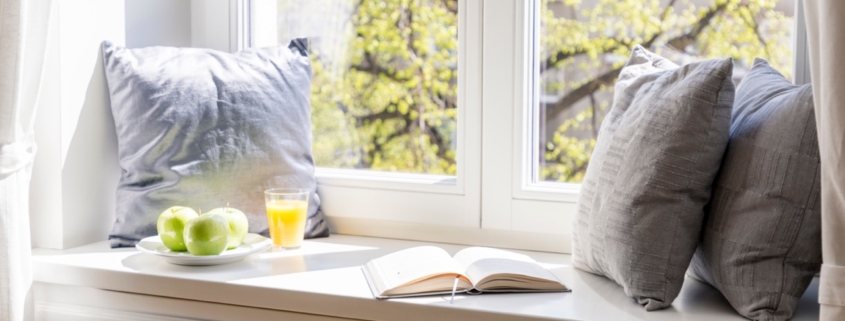Window Sill Options
Welcome to “Window Sill Options,” where we explore the diverse choices that can transform your windows and your entire living space. The perfect window sill goes beyond aesthetics, impacting durability, maintenance, and energy efficiency. Dive into our guide and discover the ideal window sill for your home. Ready to elevate your space?
Why replace your window sills?
You may want to replace your window sills for various reasons, including:
- Damage or Decay: Over time, window sills can be exposed to weather elements, moisture, and insects, leading to decay or damage. In such cases, replacement becomes necessary to maintain the window’s structural integrity and prevent further issues.
- Aesthetic Reasons: Homeowners may choose to replace window sills to improve the overall appearance of their homes. This could be part of a larger renovation or remodeling project to update the style and look of the interior or exterior.
- Energy Efficiency: Old or poorly sealed window sills can contribute to energy loss through drafts. Replacing them with more energy-efficient materials can help improve insulation, reduce heating and cooling costs, and enhance overall energy efficiency in the home.
- Functionality: If the existing window sills are no longer functioning properly, such as being difficult to open or close, replacement may be necessary for better functionality. This is often part of general maintenance to ensure that windows operate smoothly.
- Mold or Rot Issues: Moisture can lead to the growth of mold or cause wood to rot. If the window sills are affected by these issues, replacement may be required to eliminate the source of the problem and prevent further damage.
- Upgrading Materials: Homeowners may choose to replace window sills as part of an effort to upgrade materials. For example, switching from wood to more durable materials like PVC or aluminum can reduce maintenance requirements and increase longevity.
- Home Improvement or Resale: Some people replace window sills as part of a broader home improvement project to increase the resale value of their property. Modern and well-maintained window sills can be an attractive feature for potential buyers.
- New Windows: The best time to replace your window sills is during a window replacement project.
What is the best material for window sills?
The choice of the best building material for window sills depends on various factors, including the project’s specific requirements, budget constraints, and personal preferences. Here are some common materials used for window sills, each with its own set of advantages and considerations:
- Wood:
- Pros: Wood is a traditional and aesthetically pleasing choice. It can be easily customized, painted, or stained to match the interior or exterior design of the house.
- Cons: Wood requires regular maintenance to prevent decay, insect infestation, and weather-related damage. It may not be the best choice for areas with high humidity.
- Stone (e.g., granite, marble, limestone):
- Pros: Stone window sills are durable, resistant to moisture, and can add a touch of elegance to a home. They are also relatively low-maintenance.
- Cons: Stone can be expensive, and the installation may require professional expertise. It can also be heavy, affecting the window frame and installation process.
- PVC or Vinyl:
- Pros: PVC or vinyl window sills are affordable, moisture-resistant, and low-maintenance. They are also lightweight and can be easily customized.
- Cons: These materials may not have the same aesthetic appeal as wood or stone or may not be as durable in extreme weather conditions.
- Composite Materials:
- Pros: Composite materials, such as engineered wood or fiber-reinforced polymers, balance durability, moisture resistance, and versatility. They can mimic the look of wood without the maintenance requirements.
- Cons: The quality and performance of composite materials can vary, and some may not have the same natural appearance as authentic wood or stone.
Ultimately, the best material for window sills depends on your specific needs, preferences, and the conditions in which they will be installed. Consider factors such as climate, maintenance requirements, cost, and the overall aesthetic impact on your home. It’s often helpful to consult with professionals or contractors for personalized advice based on your situation.
Does window replacement include new window sills?
It depends on the state of the current window sills. If the existing window sill is damaged, decayed, or otherwise compromised, it may be necessary to include a new one as part of the replacement project. A damaged sill can affect the overall performance and integrity of the window.
In summary, your window sill choice is more than just looks—it affects your home’s efficiency. Whether you prefer classic wood, durable stone, or low-maintenance vinyl, we hope this article helps you decide. Upgrade your home effortlessly—request a free estimate today and let us bring your vision to life.
Our service area includes the following towns: Tyler, Whitehouse, Bullard, Lindale, Chandler, Canton, Mineola, Longview, Kilgore, Henderson, Gilmer, Gladewater, Marshall, Hallsville, and Palestine.









